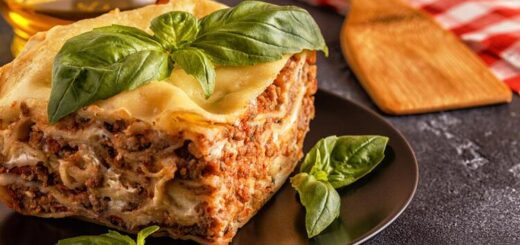What to eat at a Chinese restaurant?

Chinese cuisine is one of the oldest and most traditional in the world. It is based on a wide range of flavors and ingredients, cooking techniques and regional styles, we can distinguish 8 main ones. The basic foods are more or less the same: rice, soy, cereal preparations, meat and fish, and vegetables. Spices certainly cannot be missing to flavor dishes. Tea, on the other hand, the drink par excellence, is prepared following a ritual, with care and dedication.
Did you know what the most populous country in the world is? The China ! It extends over 10 million square km. For this reason it will seem obvious to you that it is impossible to think that in such a large space the gastronomic traditions could be the same. And although many of you are crazy about the dishes offered by the characteristic restaurant with the red lanterns in the outdoor area, it is our duty to communicate to you a sad truth: many of the recipes offered in these places are adapted to Western tastes, so we cannot consider them 100% authentic. hundred. So what would you eat in a totally uncontaminated Chinese restaurant? The answer is: it depends! It depends because among the 22 provinces into which the Chinese territory is divided, 8 were selected which represent different schools of thought. In fact, each one uses different ingredients, based on the availability offered by the land and the climate. One thing is certain, however, sharing is the basis of the traditions to be respected at the table, such as the use of wooden chopsticks and porcelain spoons. Curious to know more?
Anhui
The Anhui region is one of the least known, the cradle of mountain cuisine, that of the Huangshan Mountains, the famous Yellow Mountains, in eastern China. His dishes are characterized by slow cooking (stews, roasts, braised meats) where the play on the flame is of fundamental importance for the success of the recipe. It is healthy and very fragrant and makes extensive use of bamboo shoots and mushrooms , game, such as duck , berries and fresh herbs.
Cantonese
Guandong or Cantonese cuisine is the best known in the world, since it is precisely from the port of Canton in southern China that the most iconic dishes were spread, a striking example is certainly dim sum . Delicious chicken, beef and pork dishes are prepared, steamed, wok-fried or fried. And what about snake meat and offal? For many they are delicious ingredients! Everything must be seasoned with simple but tasty spices such as ginger, spring onion, garlic, rice wine, soy sauce and corn starch.
Fujian
The Fujian style is immediately recognisable, light, tasty, umami. Famous are the soups, oysters, the so-called drunken dishes, i.e. marinated in wine or beer, such as spicy pork ribs , and the unusual mixes of land and sea products.
Hunan
Hunan or Xiang cuisine is defined by spiciness, particularly of the numbing mala sauce . Fresh ingredients that can be stewed, roasted, braised and smoked are preferred, and a smaller quantity of oil is used compared to other regional cuisines.
Jianjsu
In this area, very soft meats are offered, well cooked, but unlikely to fall apart, together with hot soups . Fish also reigns supreme, together with the condiment par excellence, rice.
Shandong
It is also called Lu cuisine, that of the east coast, sophisticated and noteworthy for the series of seafood always available: scallops, prawns , clams, sea cucumbers, calamari and much more. The corn, on the other hand, chewy and starchy, is served steamed, with vegetables cooked in the wok, such as potatoes, cabbage, mushrooms, aubergines and onions.
Sichuan
Region known for the pepper of the same name, which is why its cuisine is characterized by invigorating flavours. The variety is wide, there are vegetarian and non-vegetarian options, such as mapo tofu , but also meat in spicy sauce .
Zhejiang
Very fatty, but at the same time delicate, very rich in both sea and freshwater fish and bamboo shoots. Everything is presented in an impeccable manner, also paying attention to the chromatic component in the dish.
8 dishes that aren’t really Chinese
Fortune cookies
Of course, these treats aren’t traditional Chinese either: some have traced their origins to a Japanese illustration from 1878, and in fact they were apparently imported to California by a Japanese restaurateur. The association with Chinese cuisine may have occurred during World War II, when Japanese in the United States were arrested and considered prisoners of war. But the history of fortune cookies is still almost entirely American.
Fried ice cream
Fried ice cream was born in the United States: it was presented for the first time at the Universal Exposition in Chicago in 1893. In the following years it was advertised as an innovative product, not necessarily linked to Chinese cuisine; but it is now considered a typical specialty of oriental restaurants.
Spring rolls
Spring rolls are a classic example of radical modification. In China they exist and bear this name, but they are smaller, served as dim sum (appetizer or snack) together with other foods, and can be fried or not, contain meat or vegetables, or even be flavored with chopped peanuts. The ones we always find fried all-you-can-eat, stuffed with cabbage, are an entirely Italian specialty.
Sweet and Sour Pork
Pork with pineapple and peppers or sweet and sour chicken are also very popular in Italy and almost unknown in their supposed country of origin: in China sweet and sour sauce is usually reserved for fish. Some have traced the origins of the dish to chicken traditionally prepared with vinegar and sugar: but it is undeniable that the relationship is rather vague.
Almond chicken
Chicken with almonds is often chosen to pair with rice : a dish that simply doesn’t exist in the Chinese tradition. It can be prepared in private homes, but as in Italy we can improvise a pasta with broccoli and cumin: the result can be excellent, but it is not a traditional dish.
General Tso’s Chicken
In the United States, however, General Tso’s chicken is highly appreciated , marinated and fried, served with a sauce that also includes soy, corn starch, sugar and chili pepper. It is one of the few Chinese dishes whose origin can be traced with reasonable precision: it was most likely invented in 1972 in New York, by immigrant chef TT Wang.
Cantonese rice
Cantonese rice also bears the name of a dish it doesn’t resemble. In Italy they like it because it is very simple: pan-fried rice with peas, cooked ham and eggs, with just a few drops of soy sauce. In the typical cuisine of Guandong, fried rice is common: but for its preparation many more vegetables are used, varied according to season and area, and different sauces.
Wonton soup
If Cantonese rice is a classic of Italian Chinese cuisine, wonton soup (or wanton) is for many a recent discovery, welcomed with pleasure because it is conceptually similar to tortellini in broth. Typically they are served in a clear and tasty broth, sometimes enriched with a few cabbage leaves; but Cantonese tradition would instead require the use of more vegetables and a richer broth. Furthermore, in China, they vary greatly according to regional traditions: in Shanghai, for example, the small ones are stuffed with pork and pak choi and are served for breakfast; the larger ones have a variety of fillings (vegetarian, meat or fish) and are considered a single dish for lunch or dinner.
Conclusion
From the variety of flavors that blend harmoniously, to the age-old cooking techniques that have been handed down for generations, Chinese gastronomic culture has proven to be a true sensorial experience. China’s regional diversity is reflected in the dishes, each with its own unique characteristics, whether spicy Sichuan or Cantonese delicacy. The use of fresh ingredients, herbs and spices not only adds extra value but also brings with it health-promoting properties. Medicine has influenced cuisine, creating a unique combination of nutrition and body care.










